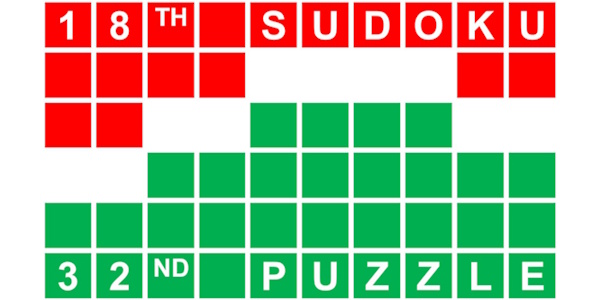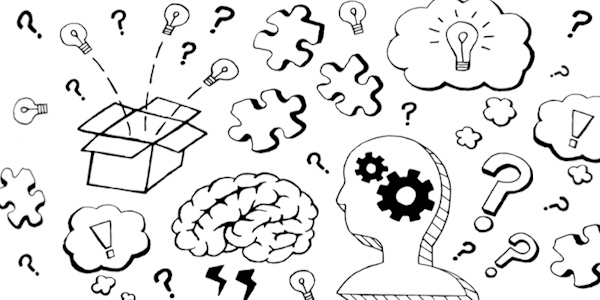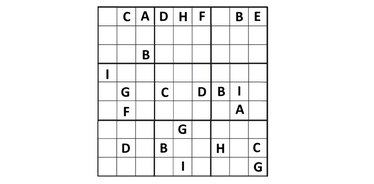We managed to fill in four of the nine squares, which is a big win in itself. The inscribed values will let us click the puzzle pretty quickly.
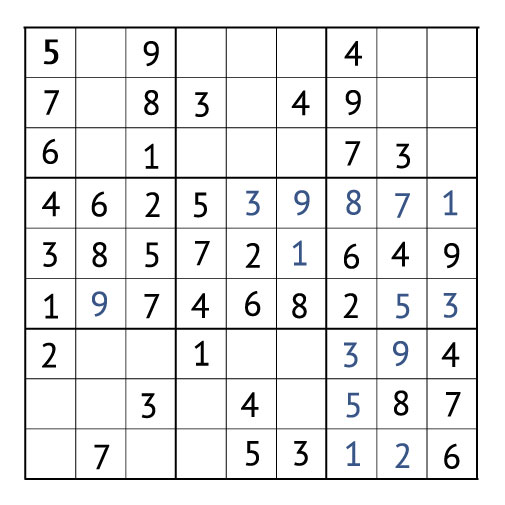
We think the best approach here is to use the "hanging fruit" technique. So, once more, we just need to look for those areas where there is literally one value left to write. Unfortunately, freebies aren't visible on the playing field.
But your eye is naturally drawn to the third column, which contains 9, 8, 1, 2, 5, 7 and 3. So, we need to try to fit in numbers 4 and 6. We need to see where they fit in better. The neighbouring squares show us that 4 and 6 fit best (bottom right). We then distribute our numbers accordingly. The four should go in the bottom right of the left square. We put the six in the top right corner of the bottom left square.
Let's move on from analysing the columns and rows. We've got the data to put a one in there. The number 1 should go in the middle of the bottom left square. Can anyone tell me why this is happening? Just to flag, the 1 is already in the left column (centre square) and is repeated in the top row (centre square at the bottom). So, there's no other place for a 1.
Let's take a look at what we get in the bottom left square. We can see there are two, six, one, three, seven and four. We're missing three values: 5, 8 and 9. Of course, we'll work out which ones to eliminate next.
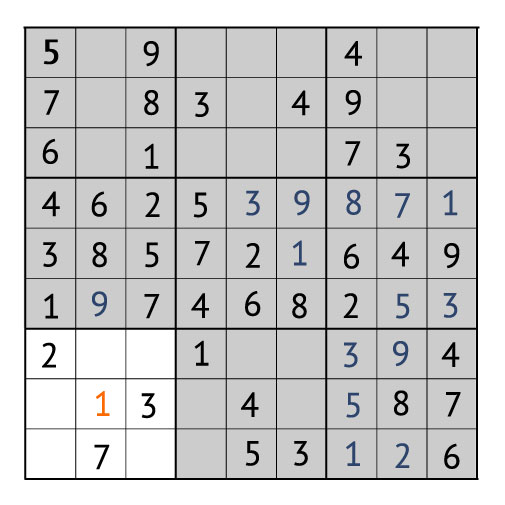
We've already got a five in the left column, and it's written in the bottom two lines (1-3-4-5-8-7 and 7-4-5-5-3-1-2). So, we just have to put the five in the top row of the bottom left square. So, we need to put the number 5 in the centre column of the square.
The lower left square now contains the digits 2, 5, 6, 1, 3, 7 and 4. All that's left is to add 8 and 9. We suggest using the proven elimination technique. There's already an eight in the centre line at the bottom (just look at the centre of the bottom right square). The whole line looks like 1-3-4-5-8-8-7. So we can't repeat that. We'll put 9 in the left centre line of the bottom left square. So, 8 should go below it. The bottom line will look like 8-7-4-probel-5-3-1-2-6.
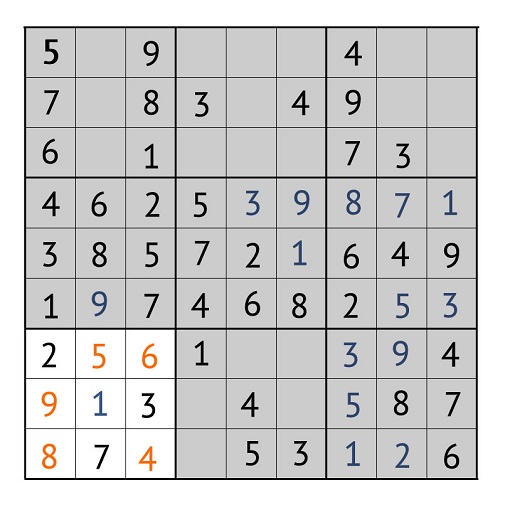
A radical breakthrough
Each new number on the grid is another step towards victory. Once we've tried out the bottom left square, we can see what progress we've made. We've filled in five of the nine squares so far. With so many values entered, solving Sudoku is quite the task (or is it?).
Let's take a look at what happens in the bottom centre square after we've filled in the "neighbours". It's got the numbers 1, 4, 5 and 3 in it. So, we just need to work out where to put 2, 6, 7, 8 and 9. It's a little tricky, but let's see if we can figure it out.
On the right side of the column, we have the number 8. Given that, we've put 7 in the top right corner of the lower centre square. So, 8 should go next to it. The number will go in the top centre of the lower left square.
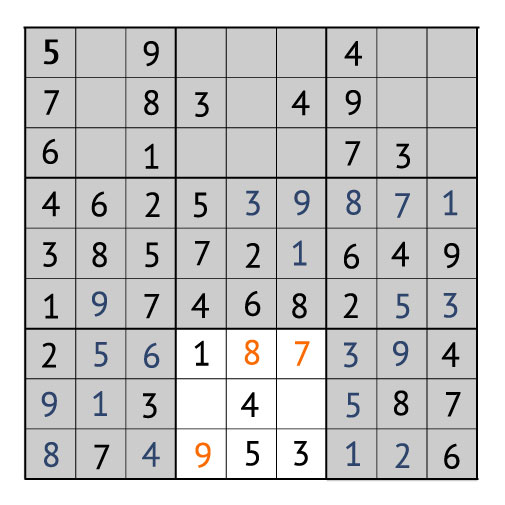
Right, let's move on. We've now got the centre bottom square, which contains the values 1, 8, 7, 4, 9, 5, and 3. Next, we need to figure out how to fill the empty cells with the numbers 2, 6, and 9. It's pretty straightforward to see what happens in the squares next door. We can see that the 9 is already in the left column (in the centre of the left square). So, there's only space for the nine in the lower left corner of our square.
So, the bottom centre square has been transformed after we've filled it in. So now it's 1-8-7-propel-4-propel-9-5-3. We need to figure out how to put 2 and 6. From looking at the other numbers, it's not clear how to place the numbers. I think we've reached a dead end here.
Let's take a step back and look at the grid as a whole to see if we can find a way out of this. We're looking at the numbers in the top left square. He needs 2, 3 and 4.
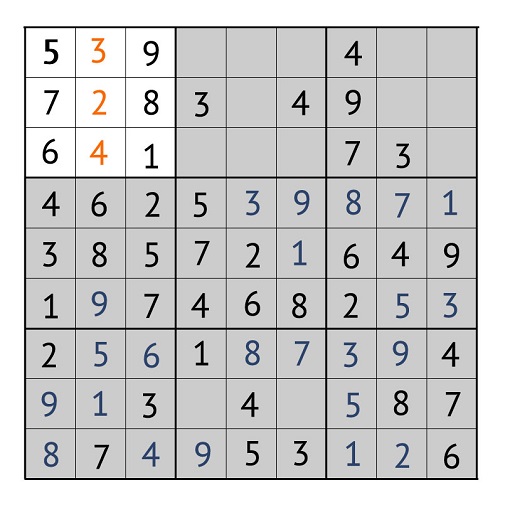
Let's tackle triples. You'll see that number 3 is in the top row (left square) and also appears centred in the top square. So, we can see that a 3 can only go in the top row, in the upper left square.
Let's take a look at where we should put the 2 and the 4 next. There's already a 4 at the top of the central square, so it's clear that the 4 can only go in the bottom row of the upper left square. So, the 2 will fit in the centre cell. Well done! We've filled in another Sudoku square. The numbers in the square now look like 5, 3, 9, 7, 2, 8, 6, 4 and 1.
It's interesting that we've filled in the centre part of the puzzle. Altogether, we've solved six out of nine squares. What's the best way to approach the puzzle and what should we keep in mind?
